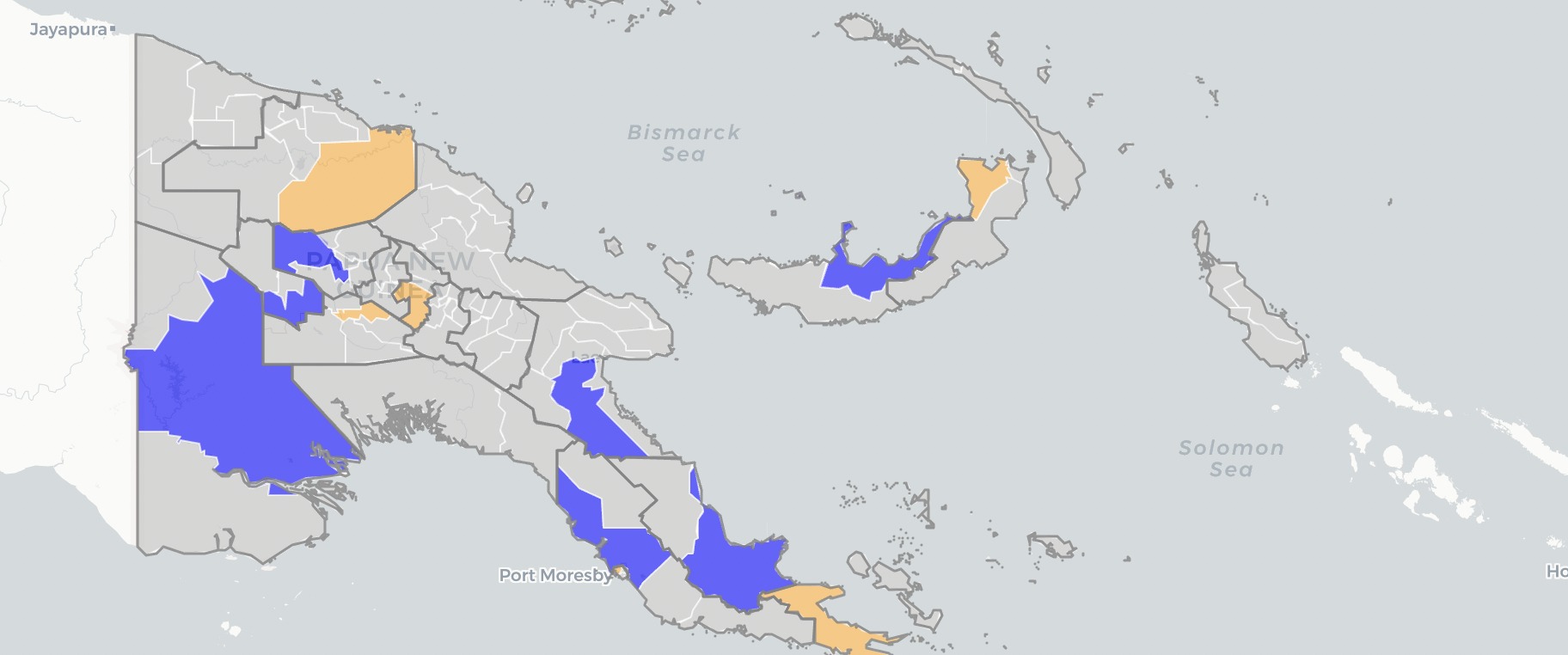Papua New Guinea’s parliament has recently passed the first successfully redistribution in the nation since 1977. The decision will see seven new seats created at the 2022 election, and a further six in 2027. While it does slightly reduce the overall amount of malapportionment, it only makes a dent in the problem, and leaves many electorates much larger or smaller than the average.
I wrote a blog post last September describing how redistributions work in Papua New Guinea, and the underlying population and enrolment figures showing the scale of the malapportionment problem.
I have been working on a Working Paper for the ANU Department of Pacific Affairs which has just been completed, but through much of the process we were relying on vague reports of which electorates were due to be split to understand the thinking of the Electoral Boundaries Commission (EBC), none of which turned out to be correct. While the EBC submitted their report to the prime minister earlier this year, their recommendations did not become public until the day after the Parliamentary vote creating the new electorates.
Seven new electorates will be created in 2022, with a further created in 2027. All thirteen new seats will be created by splitting an existing electorate in two, with no flow-on effects on neighbouring seats. This means that 76 out of the existing 89 electorates will remain untouched by these changes. The list of seats created are in the Post-Courier article above, and are also featured in my map.
The 2021 census has been postponed to 2024 due to the COVID-19 pandemic, meaning that there is a lack of up-to-date and accurate population data. The EBC decided to use the population data from the 2011 census, which is reliable, but is also old. It’s likely this has underestimated the diverging trends creating more malapportionment.
PNG legislation requires that all electorates are drawn within 20% of the average electorate population, yet only about 40% of electorates were complying with that requirement prior to this recent redistribution. That’s using 2011 population data – the figures would likely be worse if the 2021 census had been conducted.
Overall the redistribution will reduce the number of seats more than 20% away from the average, but almost half of all electorates will still be malapportioned as of 2027.
| 2017 | 2022 | 2027 | |
| >20% above | 21 | 18 | 20 |
| Compliant | 36 | 46 | 54 |
| >20% below | 32 | 32 | 28 |
- While most of the electorates selected for splitting are some of the most populous, that is not entirely the case, and there is a bias towards splitting electorates covering large rural areas. In one case, Middle Fly, they are splitting it in half even though it has pretty much exactly the right number of voters for one seat, simply because it is the largest seat in terms of land mass. Meanwhile the second-largest city of Lae has been left with one seat despite having two quotas of population, and Port Moresby won’t gain an extra seat until 2027 despite being seriously under-represented.
- This map shows the population per electorate as of the 2011 census, and can be toggled to show the seats selected for splitting in 2022 and 2027.
- The relevant legislation sets a target of 110 to 120 open electorates, compared to the 89 electorates in 2017 and the 102 electorates in 2027. If you expanded the number of open electorates to 110 or more, you could ensure proper representation for every province without reducing any province’s seat count. But that wouldn’t be enough, because there are also serious levels of malapportionment within provinces.
- While this approach is far from perfect, I want to refrain from being too critical. A massive debt of malapportionment has accumulated from 45 years without change, and the EBC openly says that the task of running the election would be made too difficult if the redistribution was too dramatic, particularly this close to an election. It will take time to create more numerical equality in PNG politics, and for once the numbers are moving in the right direction.




What’s the progress on the status of Bougainville in all this?
Comments are closed.